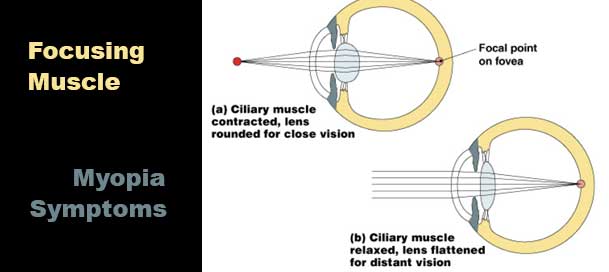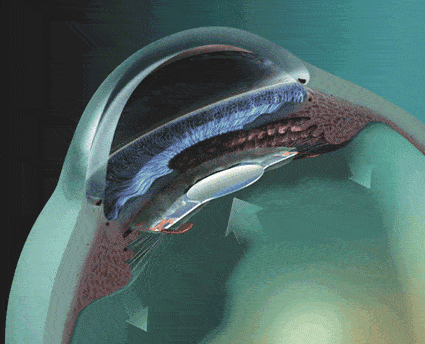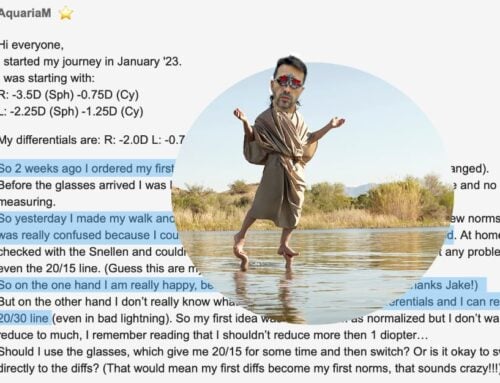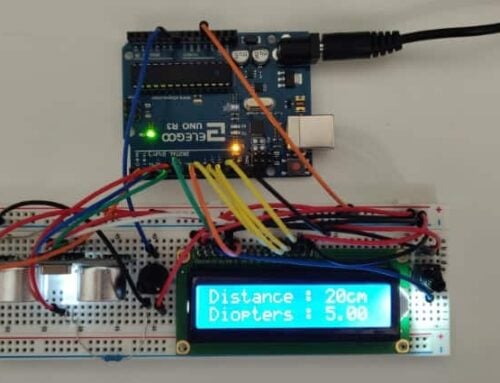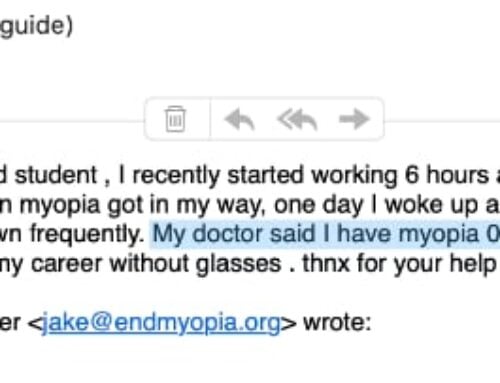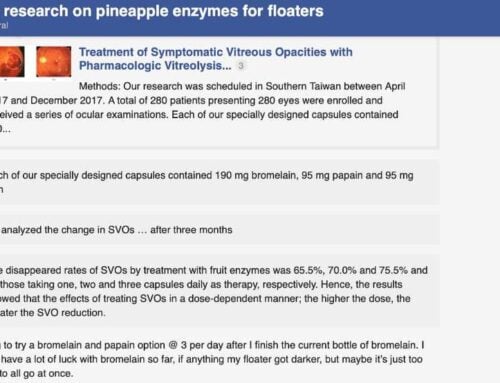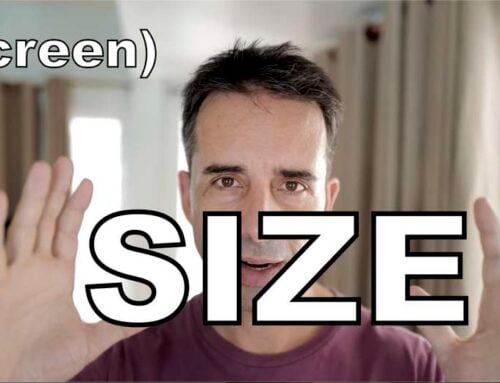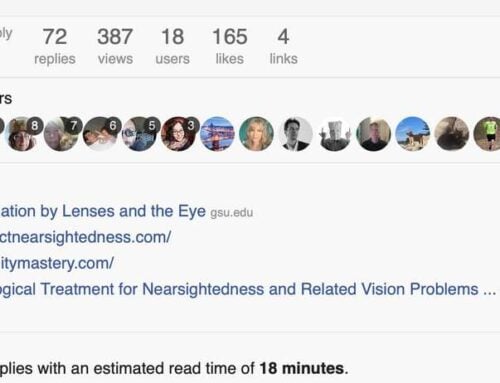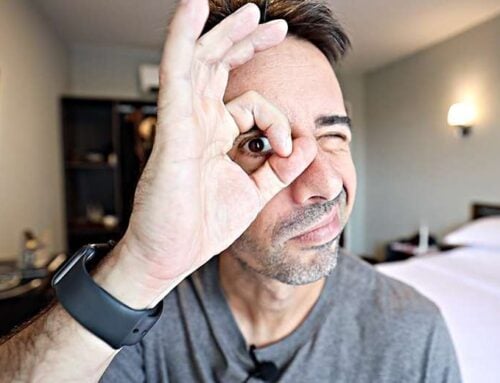Lately I have been posting a lot of eyesight improvement accounts, leaving behind a bit more specific myopia related topics. Today, let’s take a quick look at ciliary myopia symptoms.
It is a fairly common (mis)conception that myopia is entirely based on an elongation of the eyeball. The full myopia explanation can be found here – in short though, myopia tends to begin as a focusing muscle spasm (from close-up strain) that later develops into that axial elongation.
For the most part, axial myopia is characterized by a static focal plane change – in simple terms, you experience always the same vision deficiency (as you might see using centimeter calculation), as long as you are working in similar lighting conditions.
Most of us though are more affected by ciliary myopia, than axial myopia. Children, almost exclusively deal with ciliary myopia, until minus lenses are prescribed.
Ciliary myopia is a focusing muscle problem – one that can be fairly easily resolved (see The Four Pillars).
If you wear glasses with more than -3 diopters prescription for any length of time, it is fairly likely that you have both ciliary and axial myopia that make up the total of your prescription. It is because of this, that we can reduce part of your myopia quite quickly (the focusing muscle related aspects, specifically).
You may notice this theme, when looking at various clients improvement accounts.
There are a number of ways to determine ciliary myopia, as (at least a partial) symptom. Common are most variably vision effects, as for example described in this recent forum question:
“For example today I came back from school and got a 57cm and then went to sleep. I didn’t even eat, because I was so tired. Sleeping for 2-3 hours and wake up. Do a cm measurement and my vision is at 46-50cm. What, How? I did nothing but sleep.“
The full discussion can be found here. This is the type of thing you will experience, when dealing with ciliary myopia. Your vision fluctuates, while in similar lighting conditions. You may see less well just after waking up, but after you do some active focus exercises, your vision improves. Here, unlike with the relatively static symptom of axial myopia, you recognize (sometimes significant) changes in your eyesight within a single day.
You may find the opposite of the above example, where your vision starts out well, and deteriorates after close-up use. This too is a ciliary muscle symptom – too much close-up created eye strain which causes your focusing muscle to spasm.
You have control over this focusing muscle action in your eye.
When we talk about the topics of centimeter measurements, keeping a log, active focus, we are working on managing this focusing muscle symptom. You will notice that the more consistently you work on good focus habits, the more often you will get into the higher end of your centimeter measurement range. Maintaining this then contributes to reducing the axial elongation of your eyeball over the longer term, providing you with even higher, and more consistent centimeter results.
If all this is too much detail, here is the short version:
Variable results in your inter-day eyesight is a good sign.
It gives you some indication of what to shoot for, in terms of your best distance. It also tells you that your focusing muscle is participating in your efforts, and unlike the static nature of axial elongation, you can positively affect this symptom fairly quickly.
For more on these subjects, try the Vision Improvement Courses.
As more success stories and interesting progress reports are accumulating in the forum, we will likely look at those a bit closer, in upcoming posts. When reading them, consider what you may have learned here, about the interesting and positive nature of ciliary myopia symptoms.
Enjoy!

